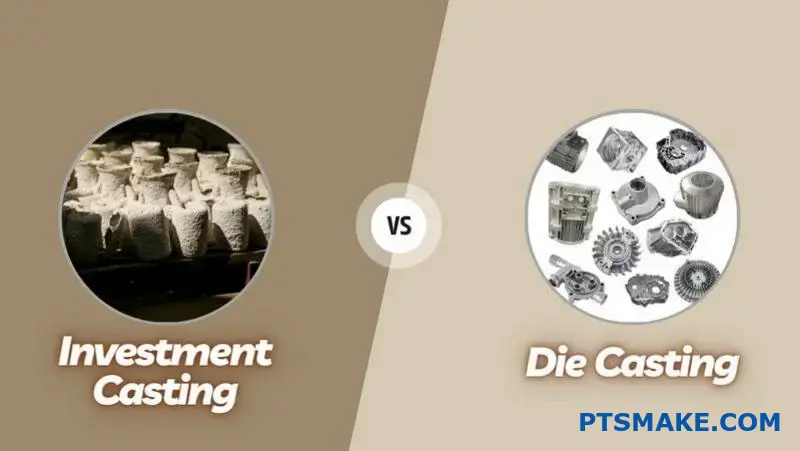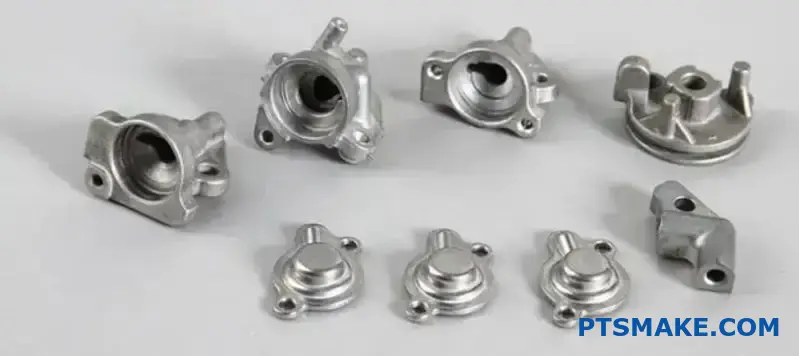You’re choosing materials for your next product, and health concerns keep you up at night. Will your customers get sick from using parts made with the wrong material? The stakes feel incredibly high when you’re responsible for selecting materials that will touch food, medical devices, or consumer products that people use every day.
Stainless steel is generally healthier than anodized aluminum for most applications. Stainless steel doesn’t leach chemicals and resists corrosion better, while anodized aluminum can release small amounts of aluminum ions over time.
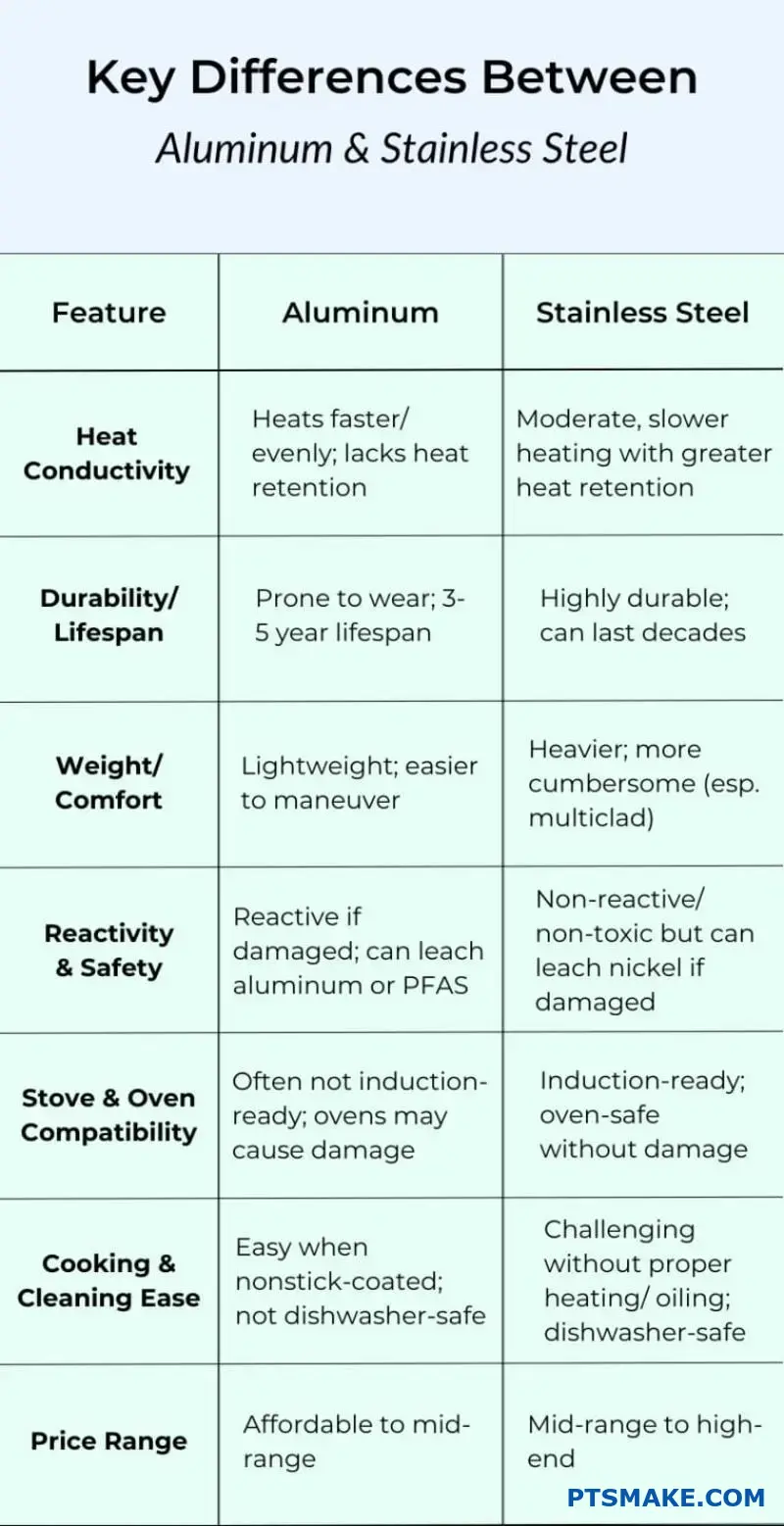
I get this question from clients at PTSMAKE almost weekly. Engineers and product managers want to make the right choice for their users’ safety. The good news is that both materials can be safe when used correctly. The real question is which one fits your specific application better. Let me walk you through what I’ve learned about these materials and their health impacts, so you can make the best decision for your project.
What Are The Advantages And Disadvantages Of Anodized Aluminum?
Have you ever specified a finish for an aluminum part, only to see it fail in the field? It’s a frustrating setback that can compromise your product’s performance and appearance.
Anodized aluminum offers exceptional durability, superior corrosion and wear resistance, and a decorative, color-stable finish. However, its main drawbacks include a hard but brittle surface prone to cracking, challenges in repairing scratches, and potential color fading under long-term UV exposure for some dyes.
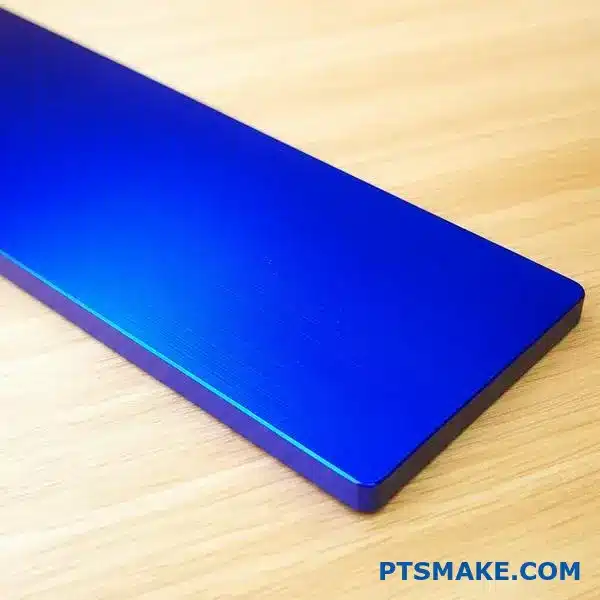
The Upside: Key Benefits of Anodizing
When we work on projects at PTSMAKE, from aerospace components to consumer electronics, the conversation often turns to surface finishing. Anodizing is a top contender for aluminum parts, and for good reason. The primary advantage is the creation of an incredibly hard, durable surface. Unlike paint, the anodized layer is integral to the aluminum itself, created through an electrolytic passivation1 process that grows the natural oxide layer. This makes it far more resistant to abrasion and wear. This enhancement is not just superficial; it significantly extends the part’s service life, especially in high-wear environments. In our experience, properly anodised aluminium can outperform untreated parts by a significant margin.
| Feature | Standard Aluminum | Anodized Aluminum |
|---|---|---|
| Surface Hardness | Relatively Soft | 60-70 Rockwell C |
| Corrosion | Susceptible | Highly Resistant |
| Finish | Raw Metal | Decorative, Colorable |
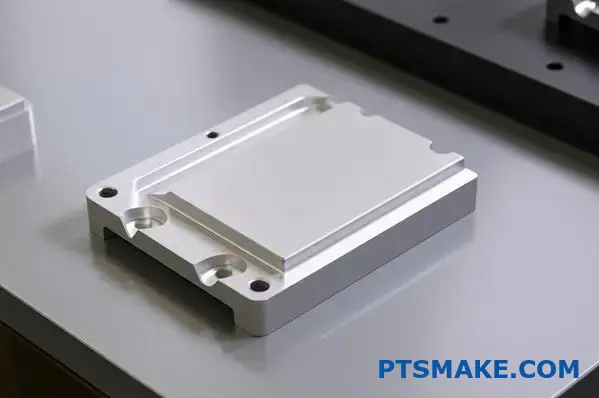
The Downside: Potential Limitations to Consider
However, no process is perfect. The same hardness that makes anodizing so durable also introduces a key disadvantage: brittleness. The hard anodic coating is less ductile than the aluminum substrate beneath it. If an anodized part is bent, impacted, or subjected to thermal cycling, the coating can develop micro-cracks, potentially compromising its protective qualities over time. Another major consideration is repairability. If an anodised aluminium surface gets a deep scratch, you can’t simply touch it up. The entire part must be stripped of its coating and completely re-anodized, which can be costly and time-consuming. This is a critical factor for parts that are likely to see rough handling during their operational life.
| Limitation | Description | Best Application to Avoid Issue |
|---|---|---|
| Brittleness | The hard coating can crack under stress. | Static structural or cosmetic parts. |
| Repairability | Scratches require full stripping and re-anodizing. | Internal components, protected enclosures. |
| UV Stability | Organic dyes can fade over time. | Indoor applications or use UV-stable dyes. |
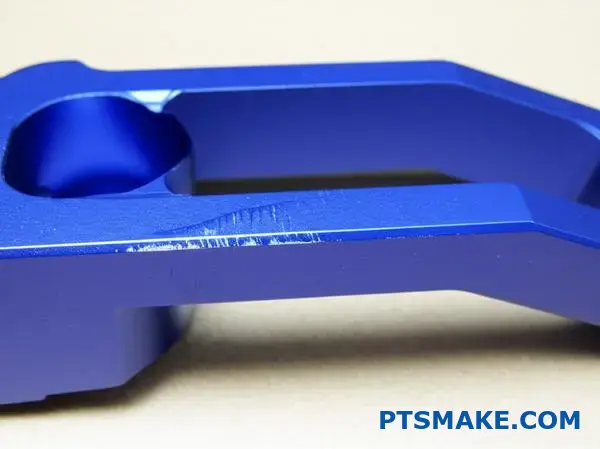
Anodizing offers a robust and aesthetic finish for aluminum, enhancing its hardness and corrosion resistance. However, it’s crucial to weigh these benefits against the limitations, such as the coating’s brittleness and the difficulty of repairing scratches, to ensure it’s the right choice for your application.
Is Anodised Aluminium Safe?
Have you ever looked at a sleek anodised aluminium product and wondered about its safety? This uncertainty is common, especially when considering items for kitchens or medical devices where safety is non-negotiable.
Yes, anodised aluminium is overwhelmingly safe for most consumer and industrial applications. The anodising process creates a stable, non-reactive, and durable sealed surface that prevents the raw aluminium from leaching or interacting with its environment, including food.
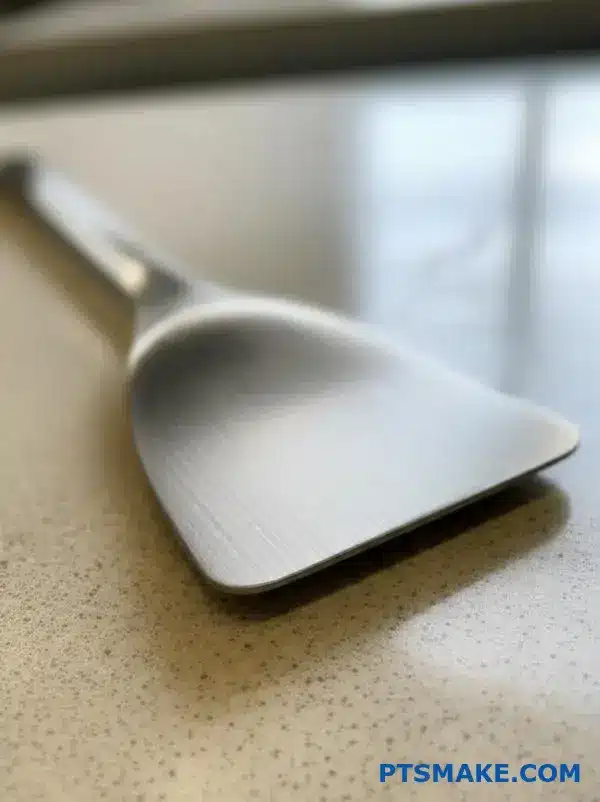
The safety of anodised aluminium comes from the protective layer created during the anodising process. This is an electrochemical2 process that converts the metal surface into a durable, corrosion-resistant, anodic oxide finish.
The Anodic Oxide Layer
This layer is not a coating like paint; it is integrated directly into the aluminium. This means it won’t chip or peel, ensuring the raw metal remains safely sealed away. This inert surface is non-toxic and stable.
Application Safety at PTSMAKE
In our projects at PTSMAKE, we always match the anodising type to the product’s end-use to guarantee safety and performance.
| Application | Key Safety Factor | Our Recommendation |
|---|---|---|
| Cookware | Resistance to acidic foods & scratches | Type III (Hard) Anodising |
| Electronics | Electrical insulation, user safety | Type II Anodising |
| Medical Devices | Biocompatibility & Sterilisation | Medical-Grade Anodising |
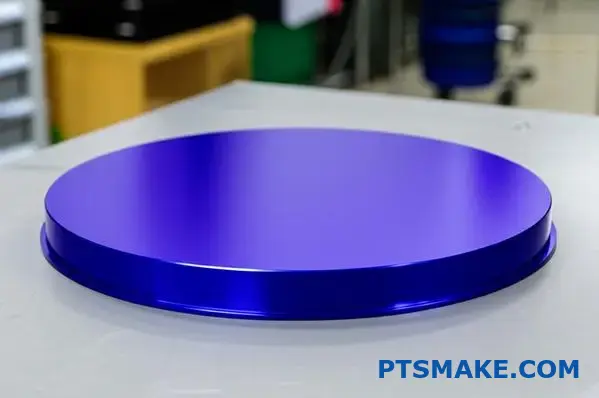
While generally safe, the protective properties of anodised aluminium can be compromised under certain conditions. The primary concern is the integrity of the anodised surface itself.
The Risk of Deep Scratches
If the anodised layer is deeply scratched or gouged, it can expose the raw aluminium underneath. For most items, this is not a concern. However, for cookware, this exposure could potentially lead to minor metal leaching when used with highly acidic foods like tomatoes or citrus.
Importance of Quality Control
Not all anodising processes yield the same quality. A poor process can result in an incomplete or porous seal, defeating the purpose. This is why rigorous quality checks on layer thickness and seal integrity are a standard part of our manufacturing protocol, ensuring every part we deliver is completely safe and durable.
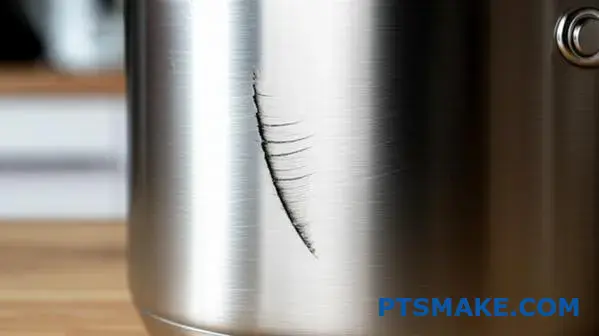
Anodised aluminium is considered very safe because its sealed, non-reactive surface prevents metal leaching. The key to its safety lies in the quality of the anodising process and maintaining the integrity of this protective layer, as deep scratches can expose the raw metal underneath.
Is Anodized Aluminum Unhealthy?
Have you ever looked at a beautifully finished product and wondered if its coating could pose a health risk? The safety of materials like anodized aluminum is a common concern for many designers.
No, anodized aluminum is generally considered safe and non-toxic for everyday use. The anodizing process creates a hard, stable, and inert layer of aluminum oxide that is non-reactive and does not leach harmful substances under normal conditions.
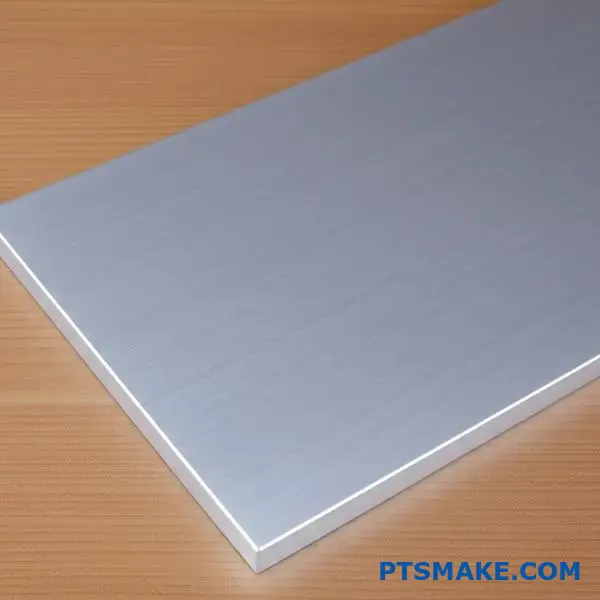
To understand its safety, we must first look at the process itself. Anodizing is an electrochemical process3 that thickens the naturally occurring protective oxide layer on the surface of aluminum parts. Unlike paint, this layer is integrated into the aluminum, so it cannot chip or peel off. In past projects at PTSMAKE, we’ve demonstrated to clients how this integral layer effectively seals the base aluminum, preventing any potential interaction with the environment. This is a key reason why anodised aluminium is widely specified for both consumer electronics and kitchenware.
Comparing Material Stability
| Feature | Raw Aluminum | Anodized Aluminum |
|---|---|---|
| Surface | Reactive, can oxidize | Inert, stable oxide layer |
| Leaching Risk | Low, but possible | Extremely low to none |
| Durability | Softer, prone to scratches | Hard, scratch-resistant |
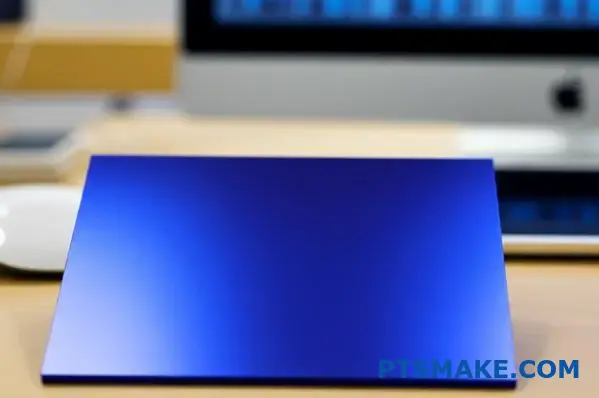
The main health discussions often revolve around aluminum exposure. However, the aluminum oxide layer created during anodization is chemically stable and non-porous after sealing. This means it acts as a robust barrier. Based on our test results, the amount of aluminum that could possibly migrate from a properly anodized and sealed surface is negligible and far below the safety thresholds set by health authorities like the FDA.
Factors Affecting Safety
Sealing Quality
A crucial final step in anodizing is sealing. This process closes the microscopic pores of the oxide layer. Improper or incomplete sealing could theoretically compromise the barrier, but this is a quality control issue, not an inherent flaw of the material. At PTSMAKE, we ensure every part meets stringent sealing standards.
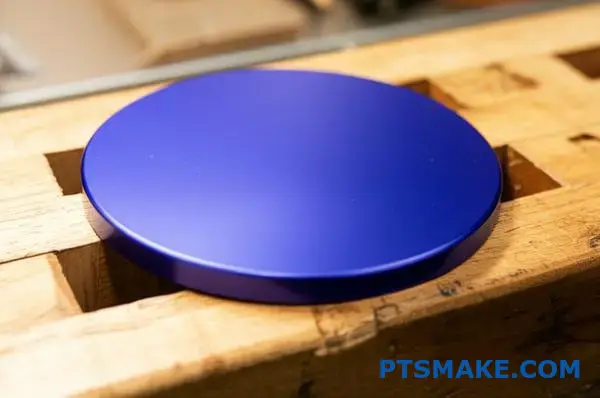
Anodized aluminum is overwhelmingly safe due to its stable, integrated oxide layer. The anodizing process creates a non-reactive barrier, and with proper quality control in sealing, any risk of aluminum exposure is virtually eliminated, making it a reliable choice for countless applications.
How Long Will Anodized Aluminum Last?
Have you ever specified an anodised aluminium part, only to see it degrade faster than anticipated? This premature failure can compromise your entire project’s integrity and reputation.
Properly specified anodized aluminum can last from 10 to 20 years, with high-quality architectural anodizing lasting even longer. The ultimate lifespan, however, is determined by the coating type, its thickness, sealing quality, and the harshness of its service environment.
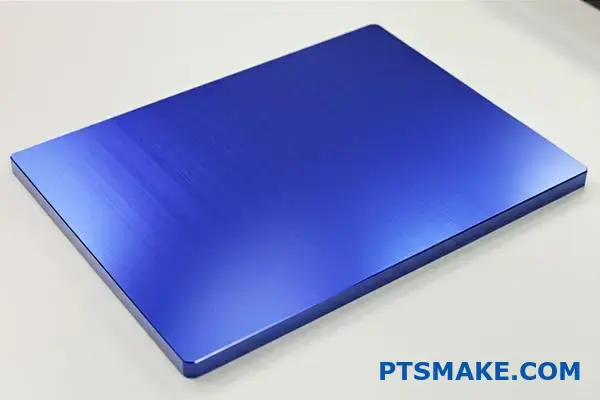
The environment where a part lives is the biggest factor in its longevity. A component used indoors, away from harsh elements, will look new for decades. However, outdoor applications introduce variables that can significantly shorten this lifespan. In past projects at PTSMAKE, we’ve seen that consistent exposure to UV radiation can cause dyes to fade, while atmospheric pollutants and acid rain can slowly etch away at the protective layer. Coastal or marine environments are particularly aggressive due to salt spray, which accelerates degradation. Understanding this is crucial before specifying a finish, as it prevents costly failures. The risk of galvanic corrosion4 also increases when the anodized part is in contact with other metals in a moist environment.
Environmental Stress Factors
| Environment | Typical Lifespan | Primary Concern |
|---|---|---|
| Indoor/Controlled | 20+ Years | Abrasion, Scratches |
| Urban Outdoor | 10-20 Years | UV Fading, Pollutants |
| Marine/Coastal | 5-15 Years | Salt Corrosion |
| Industrial | 5-10 Years | Chemical Exposure |
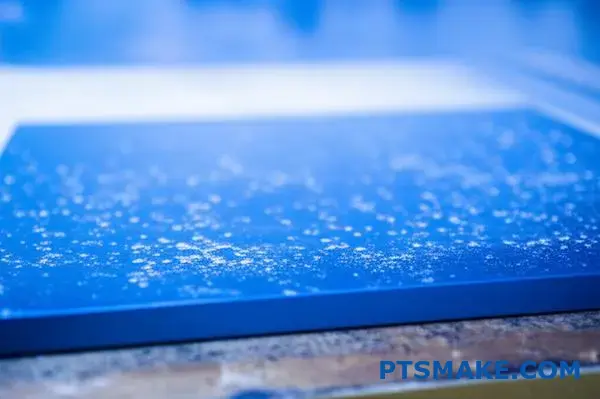
Beyond the environment, the anodizing process itself is just as critical. The choice between different types of anodizing directly impacts durability. For most commercial parts, Type II anodizing provides a good balance of corrosion resistance and aesthetic options. But for components needing extreme hardness and wear resistance, we often recommend Type III, or "hardcoat," anodizing. This process creates a much thicker and denser oxide layer. Equally important is the sealing stage. A poor seal leaves the porous oxide layer vulnerable to staining and corrosion, dramatically reducing the part’s service life. Ensuring your manufacturing partner, like PTSMAKE, has robust quality control for both the coating and sealing process is non-negotiable for long-lasting parts.
Anodizing Type Comparison
| Feature | Type II (Sulfuric) | Type III (Hardcoat) |
|---|---|---|
| Typical Thickness | 0.0002" – 0.001" | 0.001" – 0.004" |
| Hardness | 60-70 Rockwell C | > 70 Rockwell C |
| Primary Use | Aesthetics, Corrosion | Wear Resistance |

The lifespan of anodised aluminium is not a fixed number. It’s a dynamic outcome influenced by the service environment—from UV and pollutants to salt spray—and the specifics of the manufacturing process, including the anodizing type and the quality of the final seal.
Does Anodised Aluminium Resist Corrosion Better Than Steel?
Have you ever specified a material based on its supposed strength, only to watch it degrade from unexpected corrosion? This is a frequent and expensive oversight in product design.
Yes, in most common environments, anodised aluminium offers superior corrosion resistance compared to many types of steel, especially non-stainless varieties. The anodising process creates a durable, non-reactive oxide layer that acts as a powerful shield against environmental corrosion.
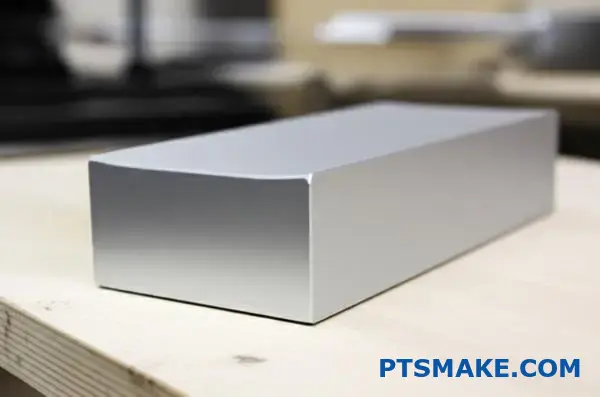
The protection mechanism is the core difference. Steel’s natural defense is iron oxide, or rust, which is porous and flakes away, exposing fresh metal to corrode further. Anodised aluminium, however, has an engineered aluminum oxide layer that is integral to the substrate. This layer is much harder and more stable. In our projects at PTSMAKE, we emphasize that this isn’t just a coating; it’s a controlled conversion of the metal’s surface. If this layer is deeply scratched, you must be careful about contact with other metals to avoid potential Galvanic corrosion5.
Protection Layer Comparison
| Feature | Anodised Aluminium (Al₂O₃) | Steel (Fe₂O₃ – Rust) |
|---|---|---|
| Nature | Engineered, integral layer | Natural, flaky layer |
| Adhesion | Excellent, part of the metal | Poor, flakes off easily |
| Porosity | Low, highly controlled | High, allows moisture through |
| Stability | Very stable, non-reactive | Unstable, promotes more rust |
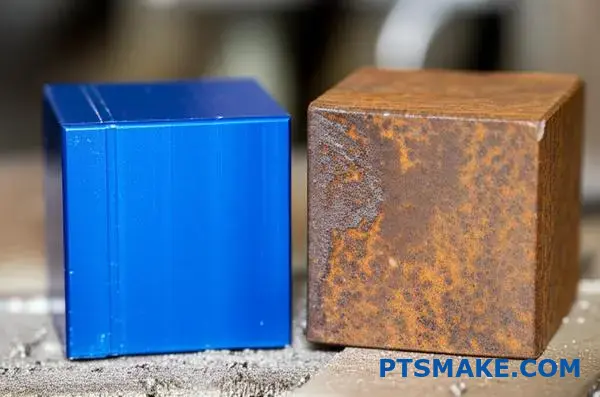
However, the answer isn’t always straightforward. The type of steel and the specific environment play a huge role. For instance, stainless steel contains chromium, which forms its own passive, corrosion-resistant layer. In certain chemical or high-chloride environments, specific grades of stainless steel might outperform anodised aluminium. We always advise clients to consider the application’s entire lifecycle. A part for a marine environment faces different challenges than one in a sterile medical setting. Based on our tests, the performance of anodised aluminium in saltwater spray is excellent, but direct chemical exposure requires careful material selection.
Environmental Performance Snapshot
| Environment | Anodised Aluminium | Carbon Steel | Stainless Steel (316) |
|---|---|---|---|
| Saltwater | Excellent | Poor | Very Good |
| Industrial (Acid Rain) | Good | Poor | Excellent |
| General Urban | Excellent | Fair | Excellent |
| Alkaline Chemicals | Poor | Good | Fair to Good |
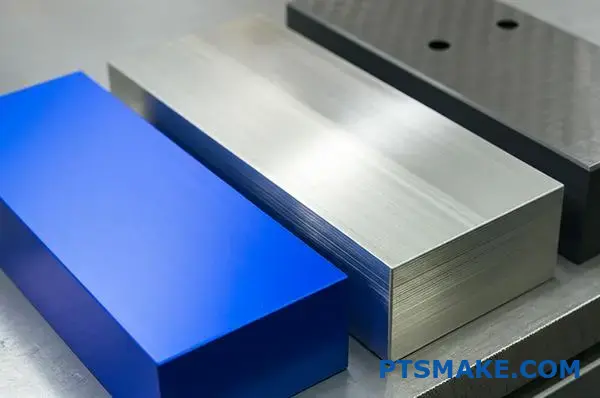
In summary, anodised aluminium’s engineered oxide layer generally provides better corrosion protection than non-stainless steel. The choice becomes more nuanced when comparing it to specific stainless steel grades or when considering harsh chemical environments, where material selection is critical for product longevity.
Can Anodised Aluminium Be CNC Machined Easily?
Have you ever designed a perfect anodised aluminium part, only to realize a feature needs to be added or modified post-finish? This can feel like a major setback, risking the entire component.
Yes, anodised aluminium can be CNC machined, but it’s not as straightforward as machining raw aluminium. The hard, abrasive oxide layer requires specific tools, techniques, and careful parameter control to avoid damaging the part or excessively wearing out the cutting tools.
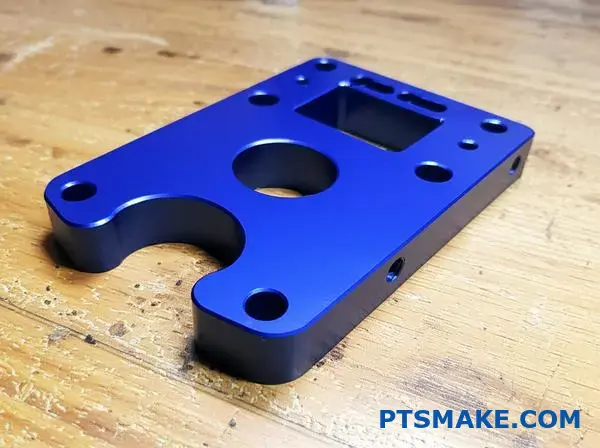
The primary challenge lies in the anodised layer itself. This layer is essentially aluminum oxide, which is extremely hard and abrasive—similar to ceramic. Machining it requires a different approach than what works for the softer, raw aluminum underneath.
The Abrasive Layer Challenge
When a cutting tool engages with an anodised surface, it first has to break through this hard coating before it can remove the substrate material. This initial contact generates significant friction and heat, leading to rapid tool wear. In past projects at PTSMAKE, we’ve found that standard High-Speed Steel (HSS) tools can dull almost instantly. The process can also cause chipping or flaking along the edge of the machined feature, compromising the part’s aesthetic and functional integrity. This makes controlling the quality of the finish much more difficult. It’s not just about cutting metal; it’s about carefully managing the transition from the hard coating to the soft galling6 base.
Tooling Considerations
| Tool Material | Suitability for Anodised Aluminium | Key Consideration |
|---|---|---|
| High-Speed Steel (HSS) | Not Recommended | Wears down extremely fast. |
| Solid Carbide | Good | Offers much better wear resistance. |
| Coated Carbide (TiN, TiAlN) | Better | Coating improves lubricity and hardness. |
| Diamond (PCD/CVD) | Best | Provides the longest tool life and best finish. |
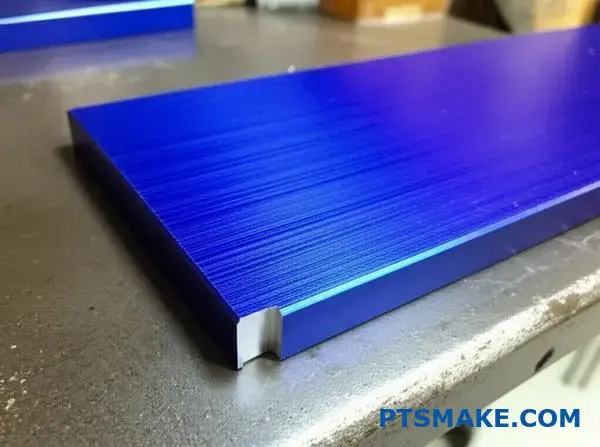
Successfully machining anodised aluminium hinges on adapting your process. It’s not a simple "set it and forget it" operation. Based on our tests, a strategic approach is necessary to achieve clean cuts and preserve both the tool and the workpiece.
Best Practices for Machining
Cutting Parameters
You must adjust your speeds and feeds. A common mistake is to use the same parameters as for raw aluminum. We typically recommend reducing the cutting speed to minimize heat generation at the tool tip and using a slightly higher feed rate to help the tool get "under" the abrasive layer quickly.
Coolant and Lubrication
Proper coolant application is non-negotiable. A steady flood of coolant helps manage heat, clear away the abrasive chips, and reduce the risk of the anodised layer flaking. In some high-precision applications, a minimum quantity lubrication (MQL) system can also be effective.
| Parameter | Recommendation | Rationale |
|---|---|---|
| Cutting Speed | Lower than for raw aluminum | Reduces heat and tool wear. |
| Feed Rate | Slightly higher | Helps the tool bite under the hard layer. |
| Coolant | Flood or MQL | Manages heat and evacuates abrasive chips. |
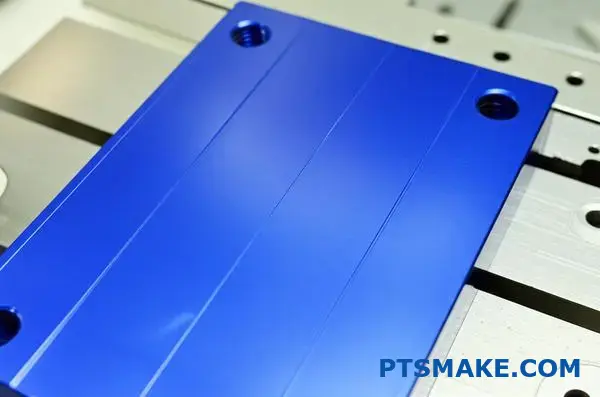
In summary, CNC machining anodised aluminium is definitely achievable. However, it demands careful planning around the material’s hard, abrasive surface. Success relies on selecting robust tooling like carbide or diamond and optimizing cutting parameters to prevent damage to the finish and ensure tool longevity.
What Maintenance Does Anodised Aluminium Require?
Have you chosen anodised aluminium for its durability, only to wonder how to keep it looking pristine? Exposure to the elements can degrade its finish, compromising the aesthetic and function of your components.
Anodised aluminium requires minimal maintenance, primarily involving regular, gentle cleaning with mild soap and water. It is crucial to avoid abrasive cleaners and harsh chemicals, as these can permanently damage the protective oxide layer and ruin the finish.
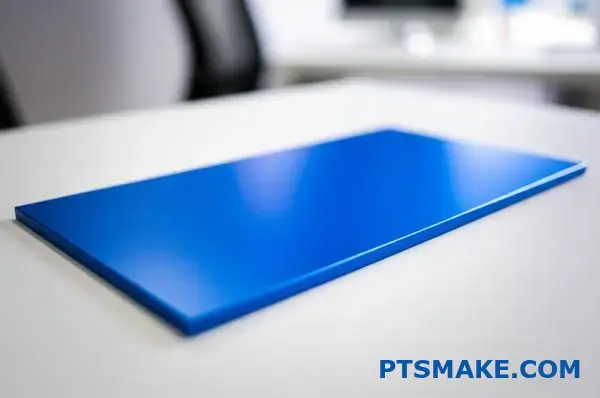
The right maintenance routine for anodised aluminium depends heavily on its environment. For parts used indoors, a simple wipe-down with a soft, damp cloth every few months is usually sufficient. However, for components exposed to harsher conditions like coastal salt spray or industrial pollutants, more frequent cleaning is vital to prevent corrosive buildup. In past projects at PTSMAKE, we’ve seen issues arise from improper assembly. It’s important to be cautious when anodised parts are in contact with other metals, as this can lead to galvanic corrosion7 if not managed correctly.
Cleaning Agent Guide
| Cleaner Type | Recommendation | Reason |
|---|---|---|
| Mild Soap/Detergent | Recommended | Gently removes dirt without harming the oxide layer. |
| pH-Neutral Cleaners | Recommended | Safe for the anodised surface; prevents chemical attack. |
| Abrasive Powders | Avoid | Can scratch and permanently damage the finish. |
| Strong Acids/Alkalis | Avoid | Chemically attacks and can dissolve the anodic film. |
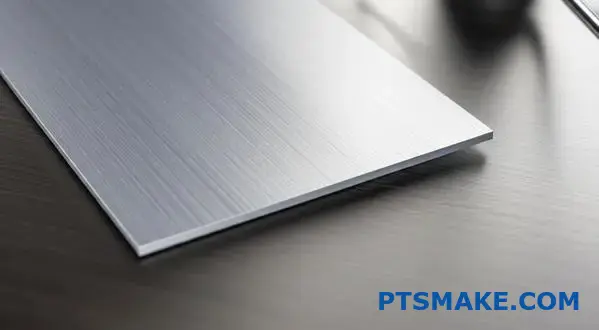
Even with the best care, damage can occur. For minor scuffs, a soft cloth with a wax-based cleaner can sometimes help, but it’s important to manage expectations. Deep scratches are a different story. Unlike a painted surface, you cannot simply "buff out" a deep scratch on an anodised finish. The colour is integral to the protective oxide layer, and once that layer is breached, the damage is permanent. For tough stains from grease or other residues, use a mild solvent like isopropyl alcohol on a test spot first. For significant damage, the only effective restoration method is to have the part professionally stripped and re-anodised.
Handling Surface Imperfections
| Damage Type | Recommended Action | Important Consideration |
|---|---|---|
| Light Dirt & Grime | Wash with mild soap and water. | The safest and most effective first step. |
| Minor Scuffs | Try a wax-based cleaner. | This may only reduce visibility, not remove the scuff. |
| Deep Scratches | Professional re-anodising. | The damage is to the oxide layer itself and cannot be polished out. |
| Chemical Stains | Consult a finishing expert. | Using the wrong chemical can worsen the damage significantly. |

Anodised aluminium is very low-maintenance, but not zero-maintenance. Its longevity depends on regular, gentle cleaning with mild detergents. Knowing the difference between a minor scuff and a deep scratch helps you take the right action to preserve the part’s finish and integrity.
How Much Does Anodised Aluminium Cost Compared To Steel?
Have you ever specified a material based on its low initial price, only to face higher costs later from finishing and maintenance? It’s a common trap when comparing metals.
While steel typically has a lower raw material cost per kilogram, anodised aluminium often proves more cost-effective when you consider the total project lifecycle. The final price is influenced by machining, finishing, shipping, and long-term durability, where aluminium’s benefits can lead to significant overall savings.
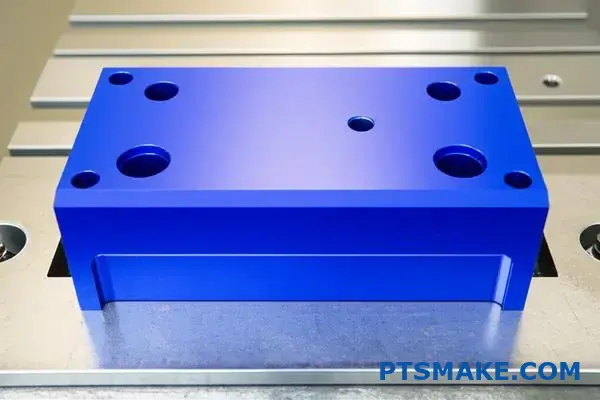
Breaking Down the Initial Investment
A simple price-per-kilogram comparison is misleading. We need to look at the full picture of getting a part ready for use. In our projects at PTSMAKE, we guide clients through these initial cost factors to find the true price.
Material and Machining Costs
Although aluminium is more expensive by weight, its lower density means you get more volume for the same weight. More importantly, it is significantly easier and faster to machine than most steels. This reduces CNC machining time and tool wear, which directly cuts down on production costs. A complex part made from aluminium might end up being cheaper to manufacture than the same part made from steel. Poorly protected steel can also be susceptible to issues like Galvanic corrosion8 when paired with other metals.
| Cost Component | Anodised Aluminium | Steel |
|---|---|---|
| Raw Material | Higher cost per kg | Lower cost per kg |
| Machining | Faster, less tool wear | Slower, more tool wear |
| Finishing | Integrated (Anodising) | Separate (e.g., Painting, Plating) |

The Long-Term Value Proposition
The cost of a component doesn’t end once it’s manufactured. Thinking about the entire product lifecycle is crucial for making a smart financial decision. The long-term costs associated with maintenance, logistics, and durability can quickly outweigh any initial savings from choosing a cheaper material.
Maintenance, Weight, and Durability
The anodised finish on aluminium is incredibly durable and corrosion-resistant. It doesn’t chip or peel like paint on steel, meaning fewer maintenance headaches and a longer cosmetic lifespan. Steel, unless it’s a stainless grade, requires consistent protection from rust. Furthermore, aluminium’s light weight is a massive advantage. It reduces shipping costs and makes installation and handling easier and safer. For applications in aerospace, automotive, or robotics, this weight saving is not just a cost benefit—it’s a critical performance feature.
| Lifecycle Factor | Anodised Aluminium | Steel |
|---|---|---|
| Maintenance Needs | Minimal | Can be high (rust prevention) |
| Shipping & Handling | Lower costs | Higher costs |
| Product Lifespan | Excellent corrosion resistance | Good, but requires upkeep |
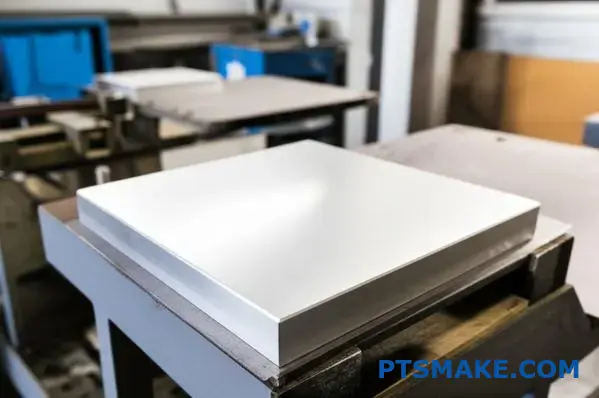
To decide between anodised aluminium and steel, look beyond the initial price tag. While steel seems cheaper at first, aluminium’s lower machining, handling, and long-term maintenance costs often make it the more economical choice over the product’s full lifecycle.
Understand the technical process of how anodizing enhances aluminum’s properties for superior component design. ↩
Click to understand the science of how anodising transforms aluminium, making it safer and more durable. ↩
Explore the detailed science behind this process to better understand its safety and applications in manufacturing. ↩
Learn how this electrochemical reaction can occur and how to prevent it in your designs. ↩
Learn how dissimilar metals can accelerate corrosion and how to prevent it in your designs. ↩
Understand how this specific type of material buildup can ruin your parts and how to prevent it. ↩
Learn how this electrochemical process occurs and how to prevent it from compromising your parts when dissimilar metals are connected. ↩
Learn how this electrochemical process can degrade parts and how to prevent it in your designs. ↩


